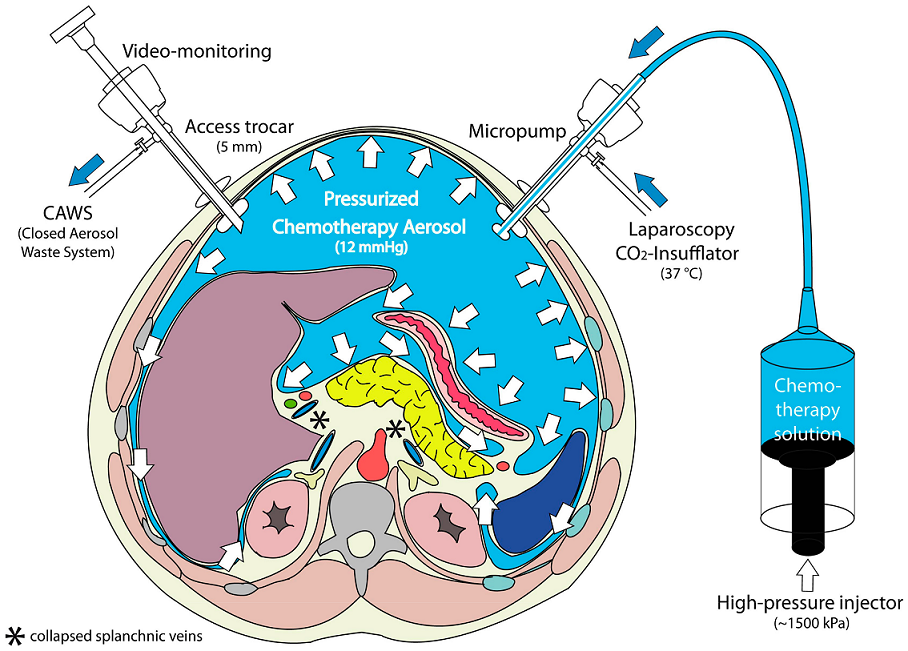Probleemstelling:
A recent and innovative drug delivery technique is called Pressurized IntraPeritoneal Aerosol Chemotherapy (PIPAC), which was developed to treat patients with peritoneal metastasis (PM) using laparoscopy [1,2]. PIPAC has a minimally invasive approach and the feasibility of repeating the treatment several times, and can improve drug penetration in the tissue [3]. During PIPAC, a CO2 pneumoperitoneum is established (12-15 mmHg) to inflate the abdominal cavity. Then, a drug-containing solution is aerosolized within the inflated abdominal cavity by means of a microinjection pump (MIP®) in combination with a high-pressure injector to obtain a homogeneous aerosol distribution within the peritoneal cavity [4] (Figure 1).
There are several experimental works that demonstrated feasibility, safety and efficacy of PIPAC [6,7]. However, no studies focused on simulating and optimizing PIPAC by Computational fluid dynamics (CFD) methods. CFD models decrease the time and costs compared to experimental models and have obtained a significant interest in the medical-engineering field because of its non-invasive character.

Figure 1. Pressurized intraperitoneal aerosol chemotherapy (PIPAC) [5]